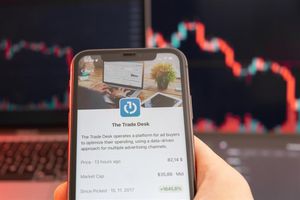
Recent economic data, particularly a hotter-than-anticipated Producer Price Index (PPI) report, has cast a significant shadow over the previously strong market expectations for a Federal Reserve interest rate cut in September. This unexpected surge in producer inflation has introduced a fresh wave of uncertainty into financial markets, forcing investors and analysts to recalibrate their outlooks for monetary policy. The immediate implication is a potential delay in the much-anticipated easing cycle, which could have far-reaching consequences for various sectors of the economy and the performance of public companies.
Producer Price Index Surges, Rattling Rate Cut Expectations
The latest Producer Price Index (PPI) data, released recently, revealed a surprising uptick in wholesale inflation, significantly exceeding economists' forecasts. This report, which measures the average change over time in the selling prices received by domestic producers for their output, is a crucial indicator of inflationary pressures building up in the economy. The core PPI, excluding volatile food and energy prices, also showed an increase, signaling broad-based price pressures. This unexpected acceleration in producer prices directly challenges the narrative of disinflation that the Federal Reserve has been closely monitoring and hoping for, as it suggests that businesses are facing higher costs, which could eventually be passed on to consumers, fueling consumer price inflation.
The timeline leading up to this moment saw market participants increasingly confident in a September rate cut, driven by a series of softer inflation reports earlier in the year and the Federal Reserve's own projections hinting at potential easing later in 2025. However, the PPI data has abruptly shifted this sentiment. Key players involved include the Federal Reserve's Open Market Committee (FOMC), whose decisions are heavily influenced by such economic indicators, and various market strategists and economists who now find themselves revising their models. Initial market reactions were swift and negative, with equity futures dipping and Treasury yields rising as investors priced in a higher probability of the Fed maintaining its restrictive stance for longer. This development underscores the Fed's data-dependent approach, where each new piece of economic information can significantly alter the monetary policy outlook.
Winners and Losers in a Higher-for-Longer Rate Environment
A prolonged period of higher interest rates, or even a delay in anticipated cuts, creates a distinct landscape of winners and losers across the financial markets. On the winning side, banks and financial institutions are often poised to benefit. Companies like JPMorgan Chase & Co. (NYSE: JPM) and Bank of America (NYSE: BAC) typically see their net interest margins (NIM) expand in a higher rate environment, as the interest they earn on loans increases more rapidly than the interest they pay on deposits. This can lead to improved profitability and stronger earnings reports. Similarly, money market funds and short-term bond ETFs become more attractive to investors seeking yield, potentially drawing capital away from riskier assets.
Conversely, growth stocks, particularly those in the technology sector, often bear the brunt of higher interest rates. Companies like Tesla (NASDAQ: TSLA) or Snowflake (NYSE: SNOW), whose valuations are heavily reliant on future earnings potential, see their discounted future cash flows diminish as the cost of capital rises. This makes their growth prospects less appealing to investors, leading to downward pressure on their stock prices. Furthermore, highly leveraged companies across various sectors, which rely on borrowing to fund operations or expansion, will face increased debt servicing costs, potentially squeezing their profit margins. The housing market is another clear loser, as higher mortgage rates deter potential homebuyers, impacting homebuilders like D.R. Horton (NYSE: DHI) and real estate investment trusts (REITs). Consumers, too, will feel the pinch through higher borrowing costs for everything from credit cards to auto loans.
Industry Impact and Broader Implications
The hotter PPI report and the subsequent recalibration of Fed rate cut expectations fit into a broader narrative of persistent inflationary pressures and a resilient U.S. economy. This event highlights the ongoing challenge for the Federal Reserve in navigating a "soft landing" – bringing inflation down without triggering a recession. The PPI data suggests that the disinflationary trend might be more stubborn than previously thought, indicating that the Fed's job is far from over. This could lead to a more hawkish stance from central bank officials, emphasizing the need for continued vigilance against price increases.
The ripple effects extend beyond just interest rates. For instance, the manufacturing sector could face increased input costs, potentially impacting profit margins for companies like General Electric (NYSE: GE) or Caterpillar (NYSE: CAT), who rely on a complex supply chain. This could lead to higher prices for consumers down the line, perpetuating the inflationary cycle. Regulatory bodies might also face pressure to scrutinize pricing practices more closely if inflation remains elevated. Historically, periods of unexpected inflation surges have often led to more aggressive monetary policy tightening, as seen in the late 1970s and early 1980s under Paul Volcker, though the current economic context differs significantly. This event serves as a reminder that the path to price stability is rarely linear and often involves unexpected twists and turns, requiring constant adaptation from businesses and investors alike.
What Comes Next
The immediate aftermath of the hotter PPI report will likely see continued volatility in financial markets as investors digest the implications for Federal Reserve policy. In the short term, market participants will be keenly watching upcoming economic data releases, particularly the Consumer Price Index (CPI) and employment figures, for further clues on the inflation trajectory and labor market strength. Any signs of persistent inflation or a surprisingly robust job market could further solidify the "higher for longer" interest rate narrative, pushing back the timeline for rate cuts even further into 2026. Conversely, a sudden weakening in economic activity could reignite rate cut hopes, creating a whipsaw effect in the markets.
For businesses, this environment necessitates strategic pivots. Companies with significant debt burdens may need to prioritize deleveraging or explore alternative financing options. Growth-oriented firms might need to re-evaluate their expansion plans, focusing on profitability and cash flow generation over aggressive top-line growth. Market opportunities may emerge in sectors that are less sensitive to interest rate fluctuations, such as utilities or consumer staples, or in companies with strong balance sheets and pricing power. Challenges will persist for highly leveraged sectors and those reliant on consumer discretionary spending, as higher borrowing costs and potentially tighter consumer budgets could dampen demand. Potential scenarios range from a continued "no landing" where inflation remains sticky and growth holds up, leading to prolonged high rates, to a "hard landing" where the Fed's restrictive policy eventually triggers a recession, forcing rapid rate cuts.
Conclusion
The recent hotter-than-anticipated Producer Price Index report has served as a stark reminder of the ongoing battle against inflation and its profound impact on monetary policy expectations. The key takeaway is that the path to disinflation is proving to be more uneven than many had hoped, introducing significant doubt into the previously high probability of a September Federal Reserve rate cut. This shift has immediate implications for market participants, signaling a potential extension of the higher interest rate environment.
Moving forward, the market will remain highly sensitive to incoming economic data, with each report scrutinized for its potential influence on the Federal Reserve's next moves. Investors should assess their portfolios for interest rate sensitivity, considering a potential tilt towards value stocks, dividend-paying companies, and sectors that historically perform well in periods of higher rates, such as financials. Conversely, a cautious approach to highly leveraged growth stocks may be warranted. The lasting impact of this event underscores the Federal Reserve's commitment to price stability, even if it means delaying the easing cycle. What investors should watch for in the coming months are not just inflation numbers, but also the Fed's rhetoric, any shifts in their "dot plot" projections, and the overall health of the labor market, all of which will provide crucial insights into the future trajectory of interest rates and the broader economy.





